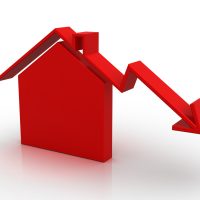
Scotland, Wales and Northern Ireland all actually saw house price growth strengthen compared to 2017, yet the poor performance of the English market served to drag the overall rate down. For example, growth in Scotland rose from 2.9 per cent to 4.6 per cent, Wales saw price growth increase from 4.3 per cent to 4.8 per cent, and Northern Ireland enjoyed a growth rise from 3.8 per cent to 4.6 per cent.
In contrast, English house price growth slumped from 4.8 per cent in 2017 to just 3 per cent in 2018.
This weakening level of growth was seen most keenly in the south and east of England, while prices in London actually dropped outright on a year-on-year basis.
The best performing local authorities
When broken down to a local authority level, some of the strongest annual growth was seen in Forest of Dean (11 per cent), Newport (10.5 per cent) and Torfean (9.4 per cent). The Land Registry suggested this may be down to the abolition of tolls on the Severn Bridge, making it more affordable for those who work in Bristol to live on the other side of the river.
West Dunbartonshire saw the strongest growth north of the border, which the Registry argued is likely down to the area’s direct trains to both Edinburgh and Glasgow.
The worst performing local authorities
At the other end of the spectrum, the worst-performing local authority table is dominated by London boroughs. The City of London for example saw annual growth of -7.1 per cent, Hammersmith and Fulham of -3.8 per cent, Wandsworth -3.3 per cent and Tower Hamlets -3.1 per cent.
The Land Registry suggested the slowdown seen in the London market over the last couple of years is likely down to a combination of the area being disproportionately affected by various regulatory and tax changes, as well as lower net migration from the European Union following the Brexit vote.
The City of Aberdeen is the only non-London local authority in the bottom five, with annual growth of -3.5 per cent.















